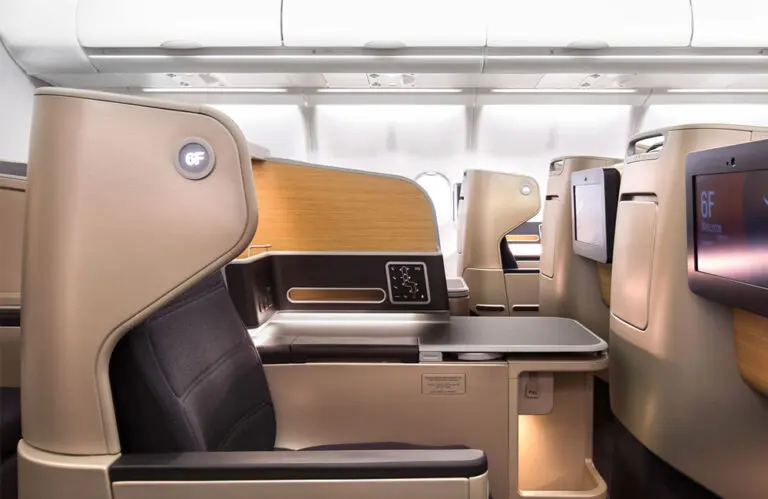If your resolution for 2024 is to travel abroad more, this will come as welcome news… a new major study has predicted economy and business fares to flatten next year, with only some key routes expected to see modest price rises and others forecast to fall.
According to American Express Global Business Travel’s (Amex GBT) new Air Monitor 2024 report, the prices predicted to fall next year are business class fares between Australia and Asia.
Predicted to drop by 5.1 per cent, business fares between Australia and Asia lead the way globally among price reductions.
Elsewhere, business class fares between Europe and Asia are forecast to drop by four per cent, Europe-South America by 3.9 per cent, North America-Asia by 3.6 per cent and Europe-Middle East by 3.5 per cent.
At the other end of the scale, business fares within Asia are anticipated to rise the most, by three per cent, followed by flights within Europe (+1.1 per cent) and between North America and Europe (0.3 per cent).
Economy fares down

Meanwhile, the study found that economy class airfares are predicted to fall across most regions.
Among economy fares, Europe-South America flights are expected to see a double-digit decrease of 10.4 per cent, followed by North America-Asia (-6.5 per cent) and Europe-Asia (-3.4 per cent).
Encouragingly, economy-class fares between Australia and Asia are also expected to fall by 3.4 per cent in 2024.
‘Revenge’ slowing

In 2023, airlines reported record profits due to strong demand, higher economy and business fares, and lower fuel prices. However, the surge in leisure travel, driven largely by ‘revenge tourism’, is expected to slow as consumer preferences shift amid high-interest rates.
At the same time, increasing fuel prices since June 2023 are squeezing carriers and adding to their financial challenges.
Despite efforts to rebuild balance sheets in 2023, the aviation industry still grapples with significant debt. Global labour costs are rising, and talent shortages in specific areas add to the challenges. Persistent supply chain issues may also lead to delays in new aircraft production and impact expansion plans.
Business not as usual?

Corporate travel discounts may face pressure as airlines prioritise yield management. At the same time, further adoption of New Distribution Capability (NDC) in 2024 could impact business travel programs as airlines’ pricing strategies become more dynamic.
“While the expected softening of fare rises is good news for our customers, sourcing for corporate travel programs remains a challenging environment,” Amex GBT Head of Consulting Dan Beauchamp said.
Based on flight search data for travel between 1 July 2023 and 31 December 2023 on travel site KAYAK and its associated brands, the average international return economy airfare grew by more than 50 per cent since before the pandemic.
International fares rose by 51 per cent to an average price of $1,826 compared to the same period in 2019, while domestic airfares also rose but at a much more moderate rate of 10 per cent over 2019.







